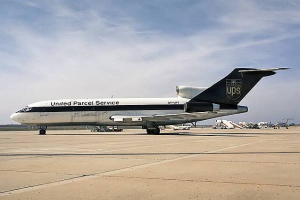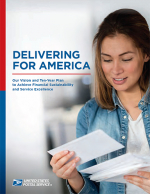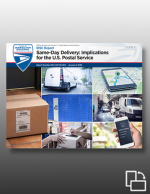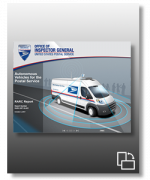Autonomous Vehicles for the Postal Service
This report details how the U.S. Postal Service Office of Inspector General set out to examine autonomous vehicles capabilities now and to interview experts about its future potential.
Autonomous vehicles (AVs) that are able to partially or fully drive themselves could become a reality within the next decade.
AV technology promises to increase safety, reduce fuel costs, and improve worker productivity. More importantly, it has the potential to change the nature of the transportation and delivery industries and to spark new business models.
For the purposes of this paper, “autonomous vehicles” will refer only to cars, trucks, and vans that drive on public roads.
Drones, small delivery robots, and wheeled warehouse robots, which have different regulatory and operational considerations, will be the subject of future research.
Some delivery companies, including the U.S. Postal Service (Postal Service), are already researching and testing AV technology.
The U.S. Postal Service Office of Inspector General (OIG) set out to examine AV capabilities now and to interview experts about its future potential.
The research suggests that while there remain stumbling blocks to adoption, the impact on the Postal Service will potentially be significant if this promising technology gains traction.
To achieve the cost, safety, and productivity benefits while limiting operational and financial risks, we suggest the Postal Service takes a step-by-step approach: test the technology first, gradually automate its vehicles where it makes strategic sense, and refine its AV strategy as the technology, market, regulation, and public perception evolve.
As the Postal Service builds its long-term strategy for testing and deploying AVs, it could consider seven distinct use cases identified by the OIG.
These use cases fall into two categories: last-mile delivery and trucking.
For delivery, the OIG identified five use cases:
- Driving the letter carrier: Ideal for curbside delivery, the AV would drive itself from mailbox to mailbox, allowing the carrier in the van to prepare the mail for the next address instead of driving.
- Driverless parking: The vehicle would park itself as the carrier makes deliveries, eliminating the need to look for parking spots while ensuring the vehicle is out of the way of traffic.
- Following the carrier: For walking routes, the vehicle would follow the carrier, reducing walking time to and from the vehicle as well as the heavy loads the carrier has to carry.
- Picking up more mail from the post office: When mail from the sorting facility is late or there are too many packages to fit in the vehicle, an AV can be dispatched to bring the items from the post office to the carrier on his route, saving return trips.
- Mobile parcel locker: A complete departure from current delivery methods, a fully autonomous mobile locker would remove the carrier from the operation. It would come to the customer when convenient, allowing 24/7, on-demand delivery.
What’s Related




Favorites





